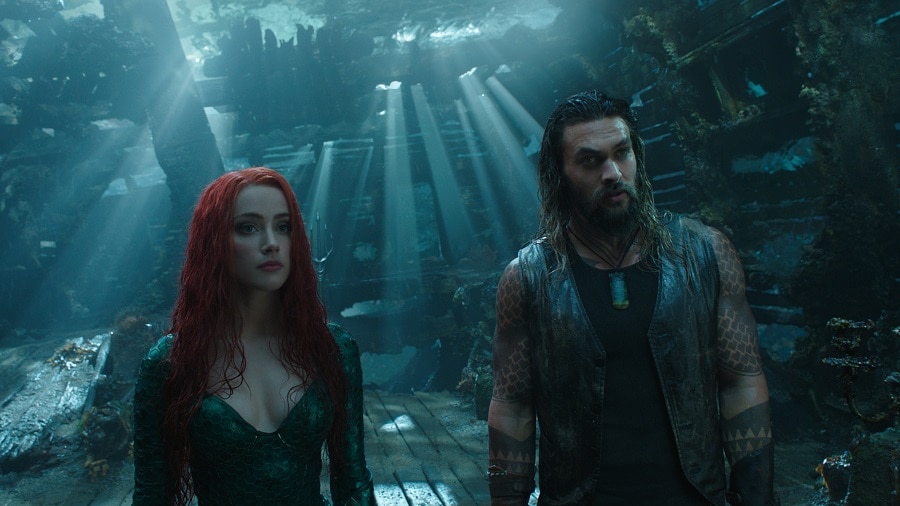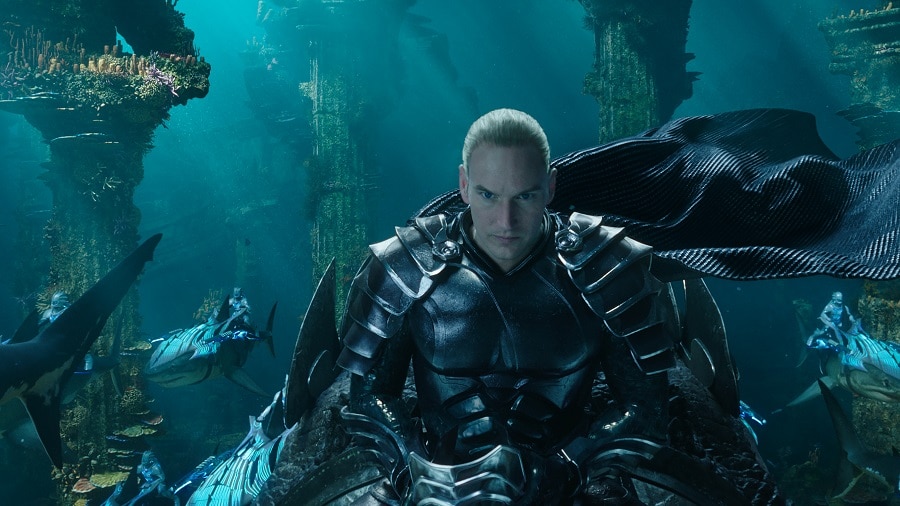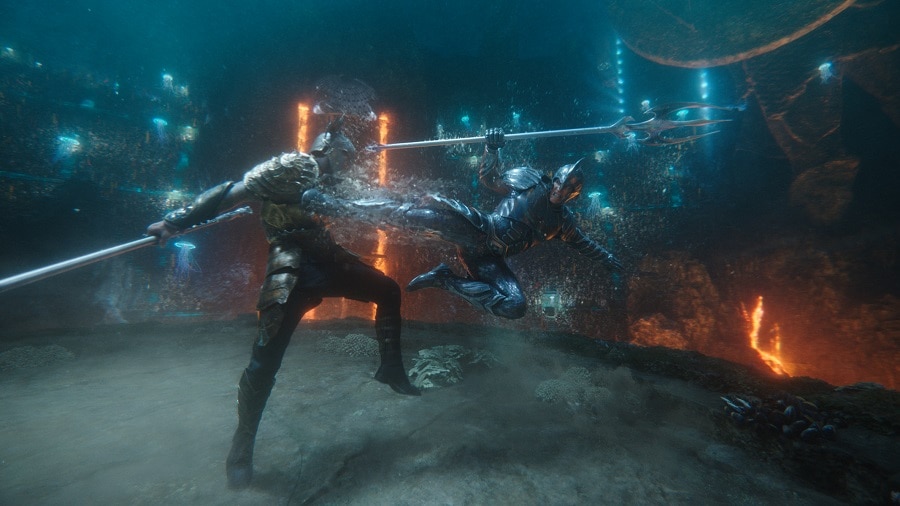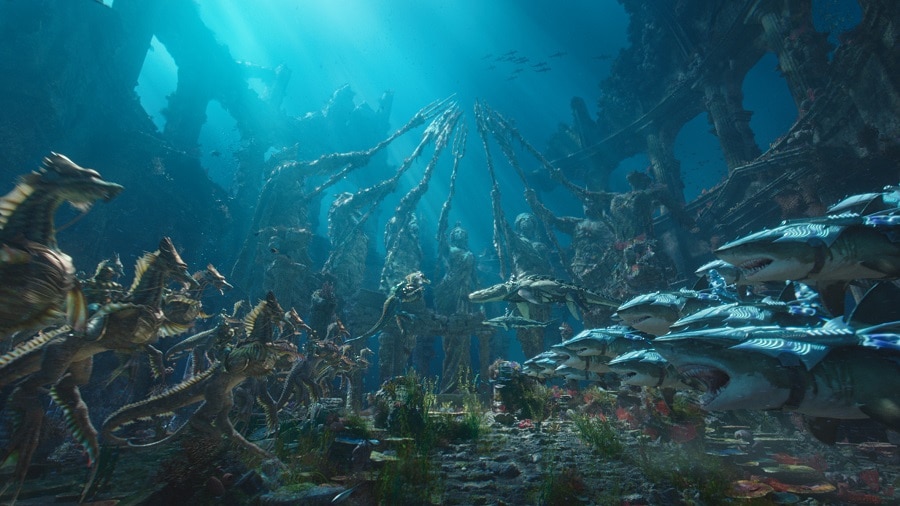If you’ve ever tried treading water for a while or swimming a long distance and found yourself quickly out of breath, you know moving in water isn’t easy.
Well, as the director of Aquaman will tell you, choreographing movement in water is no walk in the park either. James Wan’s upcoming DC epic takes viewers to some of the most inhospitable places on Earth, deep beneath the ocean where the intense pressure is more than enough to crush steel. Parts of the movie are set hundreds of miles under the surface, where light can’t penetrate and where underwater volcanoes heat the seas to boiling.
It’s a miracle anything can even survive there, and in Aquaman, it’s the setting for some of the movie’s most impressive battles. The idea of fighting deep beneath the sea may seem like a no-brainer for fans of the comics that inspired the film, but for non-readers new to Arthur Curry’s world, it can be hard to wrap their heads around.

“I get people asking me if I shoot the underwater stuff underwater, or if I’m shooting in slow motion to try to capture the nature of underwater movement,” shares Wan, who makes his superhero movie debut with Aquaman. “Well, no, you’re thinking like a surface dweller. When you’re from that world, you don’t move like we do. For them, they’re way more powerful when they’re underwater. Right from the outset, we all thought that the characters should move like how they would move in a normal environment for them.”
Conceiving exactly what that is, however, took a bit of work. After all, while the production team can and did study fish and other sea life, there isn’t exactly a real-world equivalent for a civilization of water-dwelling humans.
“They’re supercharged in a lot of ways,” Wan continues. “So, there was a lot of planning from all of us on the conceptual team, working with the stunt people to design rigs that the actors can sit in and move in.”
While Aquaman’s undersea fights and battles may wind up being what grab the attention of moviegoers, Wan and his team spent just as much time thinking about smaller, less splashy details.

“I think about how when we’re on land and we’re walking, we move our arms left and right to sort of keep ourselves in balance,” he explains. “What is the version of that do when they’re swimming? The tiniest little movement will propel them so far forward, like sharks or dolphins. Just the tiniest little bit of muscle movement and they just rocket through the water. Even though it’s fantasy, I try to bring in as much reality into it as I can while still having a little bit of liberty with it as well.”
One sequence where this is clearly on display is a high-stakes ritual battle that takes place between Arthur and his brother, Orm. Small moments of this pivotal scene can be glimpsed in the movie’s trailers, but in the film itself, it’s a breathtaking fight that finds the brothers battling across the ocean floor, as well as above it and beneath it—using the liquid space of Atlantis to give a new spin to a familiar sort of showdown.
“It’s a classic sword fight,” Wan says. “I mean, they use tridents, but really it’s a sword fight. But you take it and you transport it to this environment and it takes on a whole different look and feel. How the characters move informs the choreography and all of that.”

So, how exactly does one go about conceiving a sequence like that? After all, most of Aquaman’s undersea sequences were shot on land.
“With a lot of difficulty!” Wan laughs. “It took a long time. Just working very closely with my amazing stunt department. We built rigs for the actors. The biggest directive I had for the stunt department was to make sure it was a fight sequence we had never seen before.
“We start out with baby steps, designing the fight itself on flat ground. We lay it all out fight-wise, choreography-wise, and then at some point go, ‘You know what? Instead of ducking it like this, maybe he spins in the air?’
“Then we take to the next level and we bring wire into the equation. We redesign it based on some wirework, and then visual effects come in and help us take it to a completely new level that we couldn’t do otherwise.”

No doubt, Aquaman is an effects-heavy movie, but when it comes to the action, Wan prefers to keep one leg in the realm of practical effects.
“That’s how we start,” he says. “We start with practical, real stunts with stunt people laying out the flow and the action. Working with my editor to put it all together, and then just looking at the fight and how it plays. It’s a constant process of going back to the stunt people and saying, ‘Instead of this, what if we tried it like this?’”
Having made our way through decades of popular, visually impressive superhero movies, it’s easy to forget that Aquaman really isn’t like any of the movies that have come before. It’s as much a fantasy adventure as it is a story about one of the world’s foremost superheroes. In fact, it’s so technically demanding that it probably would have been impossible to pull off much before now.
“Nothing in this movie is straightforward,” admits Wan. “Not even two people sitting around talking is straightforward. You have CG hair, costumes, beards… It’s such a difficult movie to make from a technical standpoint.”
Aquaman arrives in theaters on Friday, December 21, 2018. For more on the upcoming DC blockbuster, click here.















